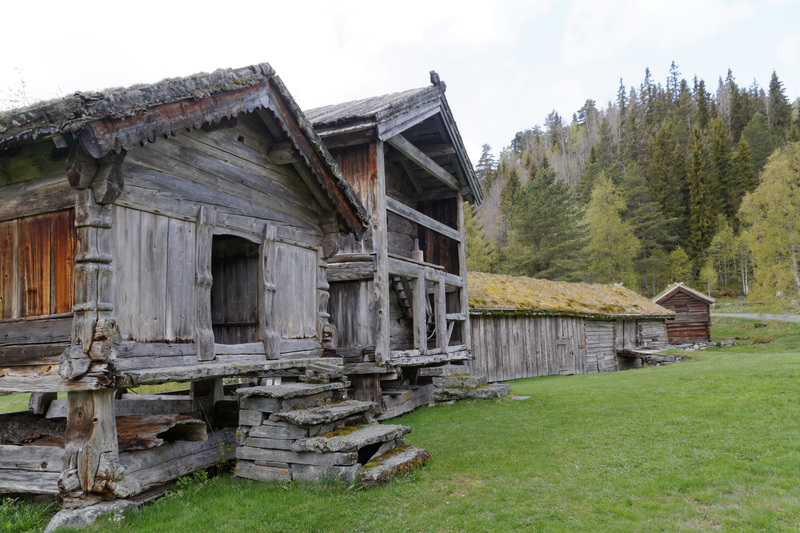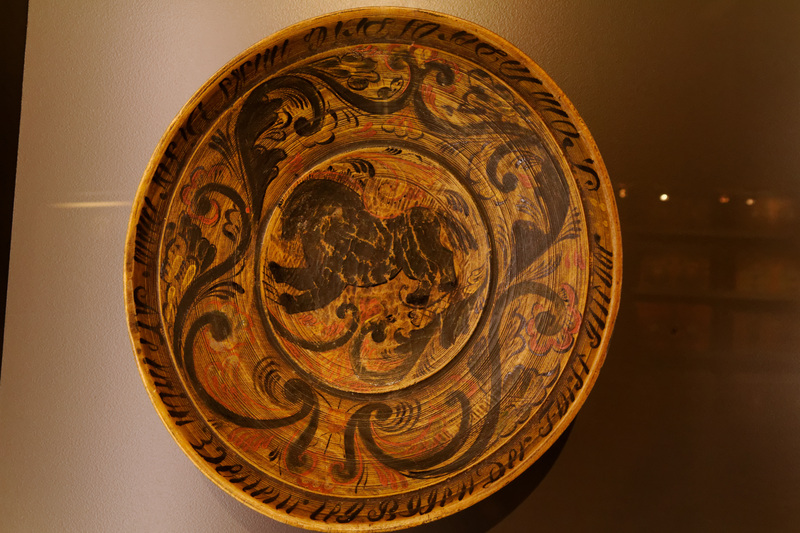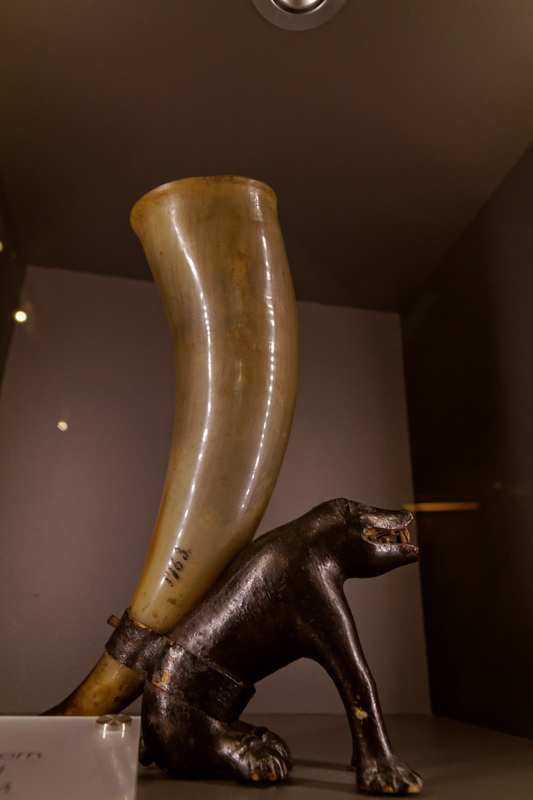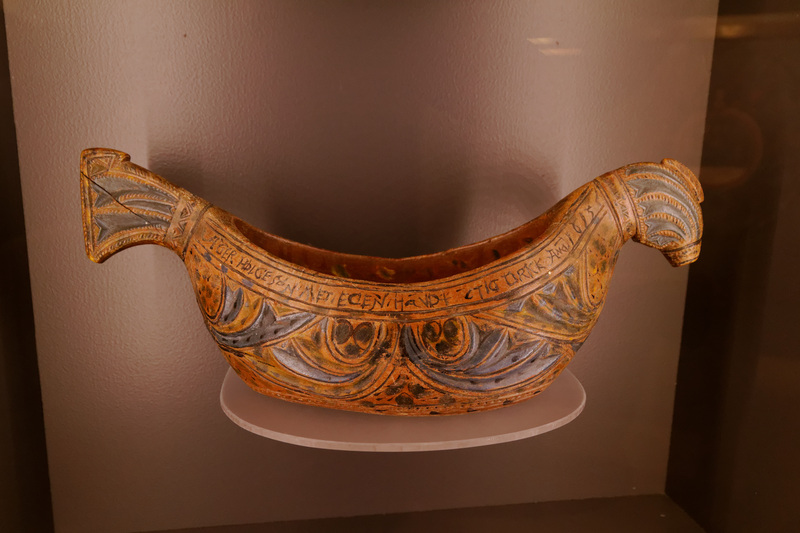Telemark: the world of yesterday

West Telemark museum |
Driving through the pass after Notodden, I could see the landscape changing. The hills had given way to real mountains with snow on their caps. It was the last day of May, and the fresh snow was almost blindingly white in the sunshine. I was leaving flat, prosperous eastern Norway for the mountainous region of Upper Telemark, a part of the country that used to be quite remote.
This relative isolation continued well into the 20th century, and so when Norway was searching for a national identity to prove its need for independence from the Swedes, Upper Telemark came in handy. Here was a rich and distinctive culture of wooden carving, painted decoration, folk music, skiing, and, of course, beer brewing. It was deliberately used as a model of true Norwegian ethnicity, which I suppose in a way it was. So to discover that farmhouse brewing was still alive in Upper Telemark was not a huge surprise.
As I was preparing for the trip I was calling various museums. One person directed me to call a guy at the West Telemark Museum. So I call him up, and ask if they have any brewing gear at the museum. "Noooo...," he replies, kind of hesitantly. "Actually, I have better gear at home." Now this sounds interesting! So we chat for a while, and he agrees to meet me when I come to the museum.

Beer drinking bowl, West Telemark museum |
He turns out to be from Høydalsmo, which is about 15km further into the mountains from Morgedal. His grandma used to brew, but she refused to teach him. It was too much work, she said, and she was too old. So, like Halvor and Terje, he went to Aslak and learned to brew from him. Coming home he brought out all the old wooden brewing gear and put it in the brook a couple of days, so that the wood would swell up and close any little gaps and holes.
Finally, he was ready and gathered the gear in the yard. Then grandma came out. Brewing herself was too much work, but advising him was another matter. "You can't brew yet," she says. "You have to bake the vessels with juniper infusion first." So he had to boil juniper infusion, then clean the wood thoroughly with hot infusion. Which makes sense, since cleaning wooden vessels sufficiently so they're safe for brewing is not so easy. Then thought he was ready to brew, but no.
"Now you have to stone bake it, too," grandma says. This turned out to involve filling the vessels with water, and then heating stones in the fire. Once they were properly hot they could be dropped into the vessels and bring the water to a boil. However, even this wasn't enough, because if he just dropped the stones in they would knock the bottom out of the vessels. So he had to put juniper branches in the bottom to cushion the impact. Finally, when all this was done he was ready to brew.

Wooden brewing gear, Norwegian Folk Museum |
The brewing process was much the same as with Terje and Halvor, so I won't go into detail. He mashed by heating malts and juniper infusion in the kettle over the wooden fire. As the mashing progressed he found that his grandma didn't need the thermometer. She could recognize the first mash rest temperature by the colour of the liquid above the malts, and the second one from the sound of the kettle.
Then, a few days later, the beer was finished, and it was time to try it. And now he was in for a surprise. When he turned the tap to draw the first drops of beer, his grandma pushed her way past everyone else, and insisted on having the first drops in a cup she'd brought. Then she went outside in the yard and threw the beer onto a rock in the middle of the yard, shouting "out of the way!"
Now, this wasn't just any old rock. Since before anyone could remember another rock had been sitting on top of it. The top rock was in the shape of a phallos. It used to stand up, but, well, that didn't seem proper any more. However, they couldn't throw it away, either, so now it lies on its side. That was the rock grandma threw the beer onto.

Beer drinking horn, West Telemark Museum |
He said he thought this was a beer sacrifice, to the spirits. He thinks the shout was intended to tell the spirits to get out of the way so they wouldn't be splashed with beer. His grandma would never go straight through a door after opening it. Instead, she would step aside first, as if letting someone else out, then go through the door. Another superstitious oddity was that when stirring food she would always stir either the same direction the sun goes, or crosswise. Never, ever would she stir the wrong way.
When I came home I wrote down my notes and thought about this story. And pretty soon doubts were developing. This superstition sounded simply too wild to be true. Beer sacrifice to invisible spirits? Rules about how to stir food and beer? In the 1980s?
So I started looking into old sources and found that sacrifice of beer to the ancestors had been practiced probably all over Norway in the past. Later, the image of the ancestors got rather blurry, and they merged with the invisible underground spirits. But the sacrifice continued. In later times, people would generally sacrifice to a special tree in the farmyard ("tuntreet", the yard tree), but it could also be a stone. This custom appeared to have lived into the 1900s in remote places, like for example Upper Telemark.
Suddenly the story didn't seem so unlikely, after all.
Later I found a beer recipe that ended with a stern warning, in all capital letters, against stirring the mash the wrong way. Underneath was the date November 8, 1996.

Beer drinking vessel, dated 1685, West Telemark Museum |
Similar posts
Brewing in Morgedal
The farmhouse survey showed that brewing in Telemark was still alive in the 1950s, but for a long time I thought it had died out
Read | 2015-10-29 14:00
Berm: Yeast from Upper Telemark
I was doing a talk about kveik in Oslo, when one of the audience members afterwards said that in his home village people also had their own yeast, but they called it "berm"
Read | 2024-04-03 21:09
The yeast scream
A strange custom they have in Stjørdalen in Norway is to scream into the fermenter as they pitch the yeast
Read | 2017-01-25 16:58
Comments
Dan - 2020-02-24 02:28:15
I am really enjoying reading through all of your blogs, particularly those on microbiology and historical Brewing. You write beautifully and I love the way you include all of the sources. I'm looking forward to the release of your new book.
Thank you for all of your hard work. Inspirational! Dan